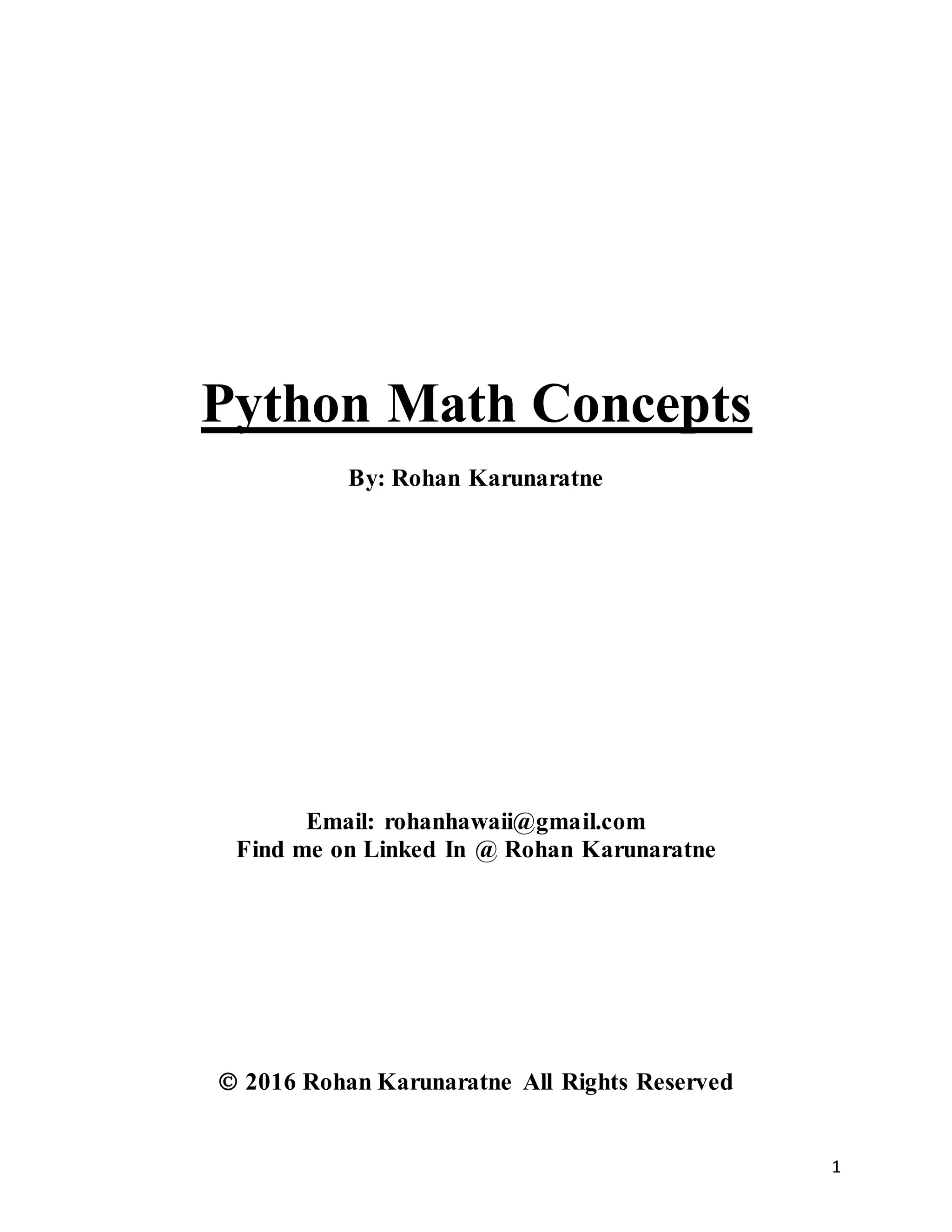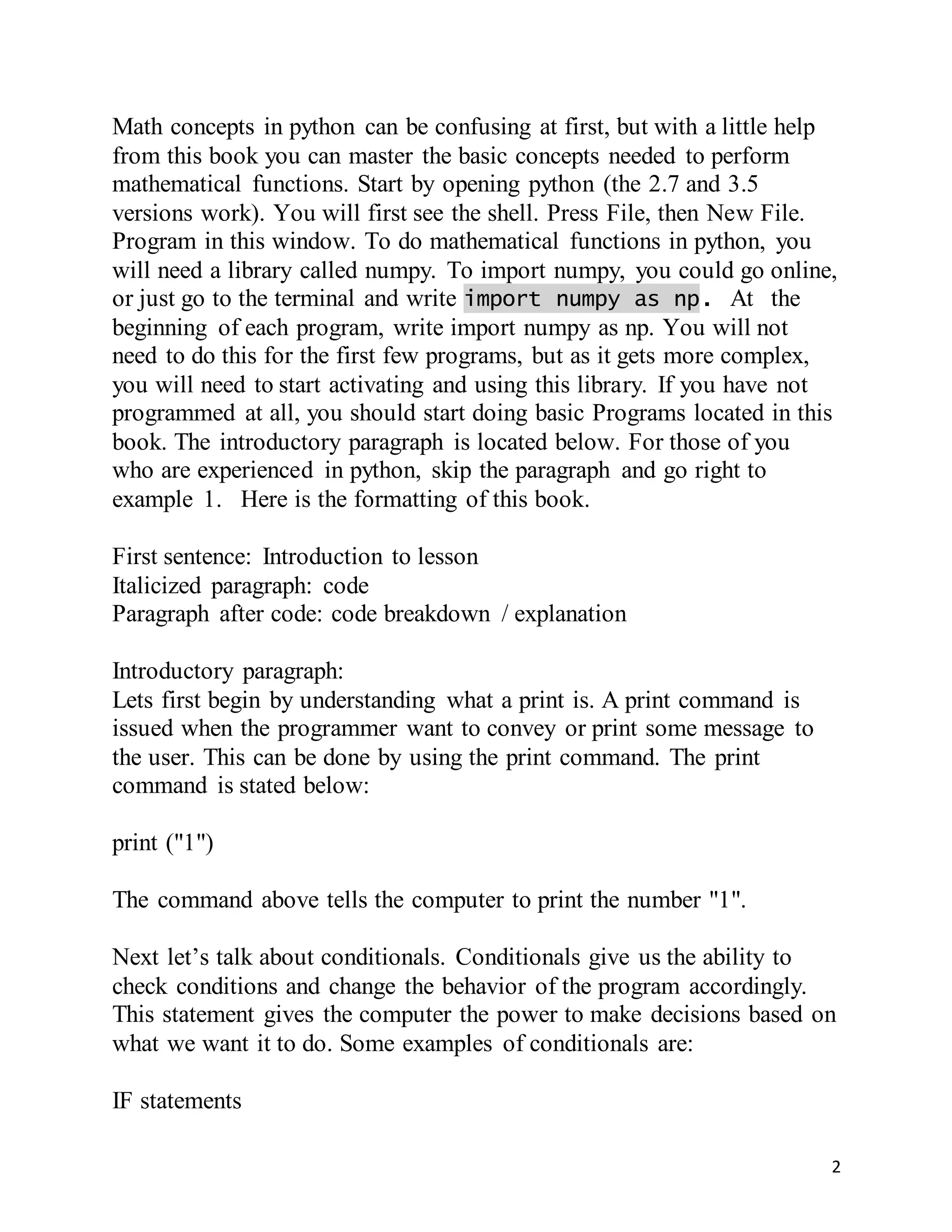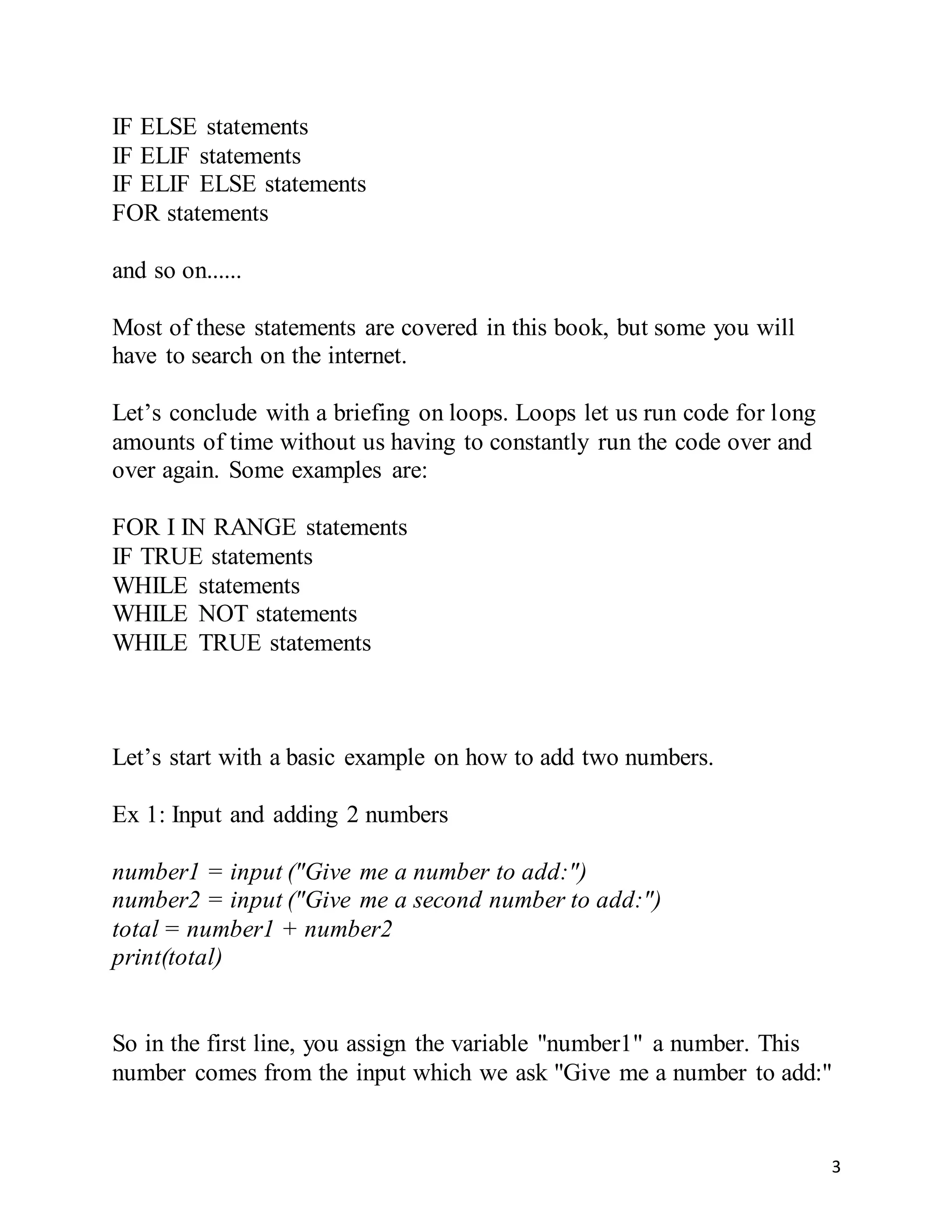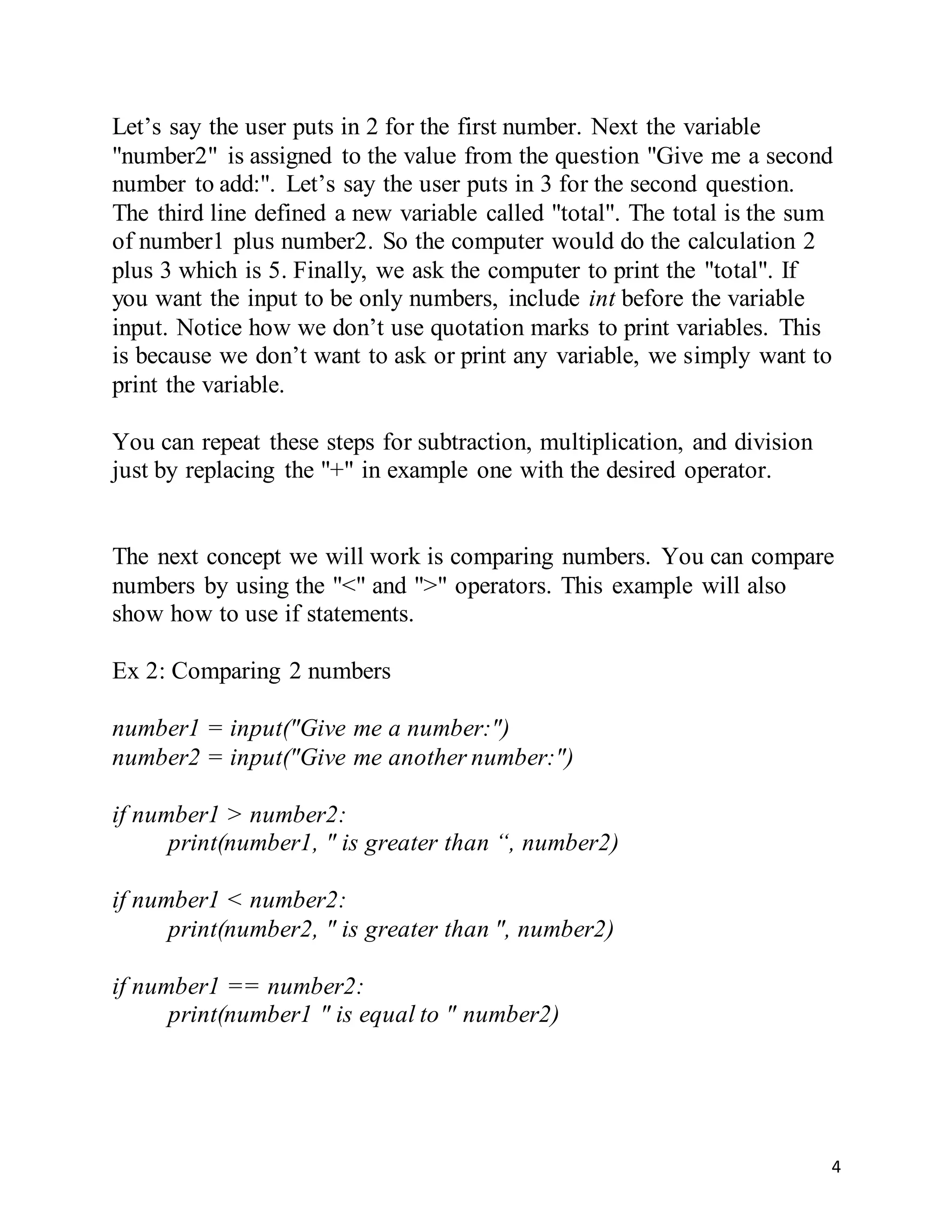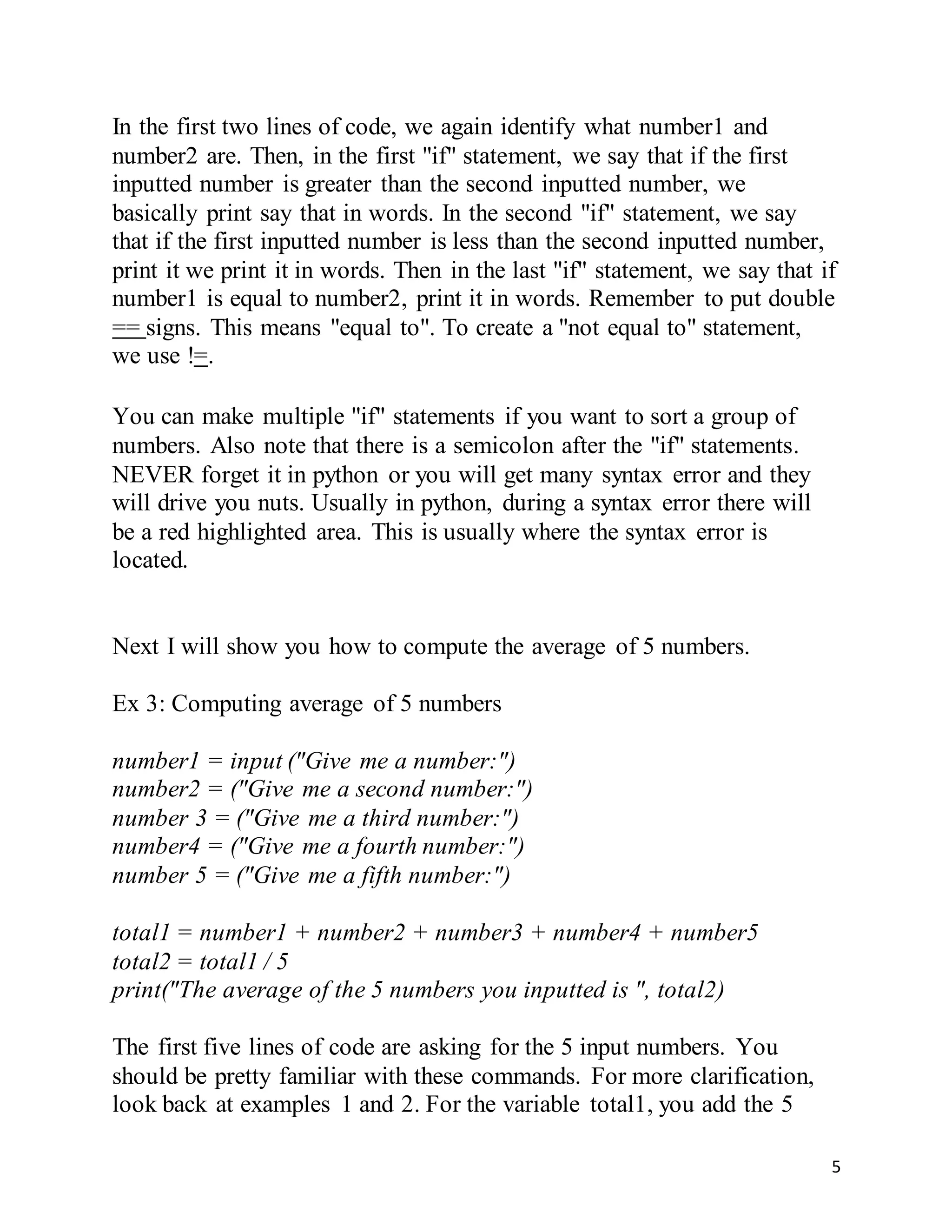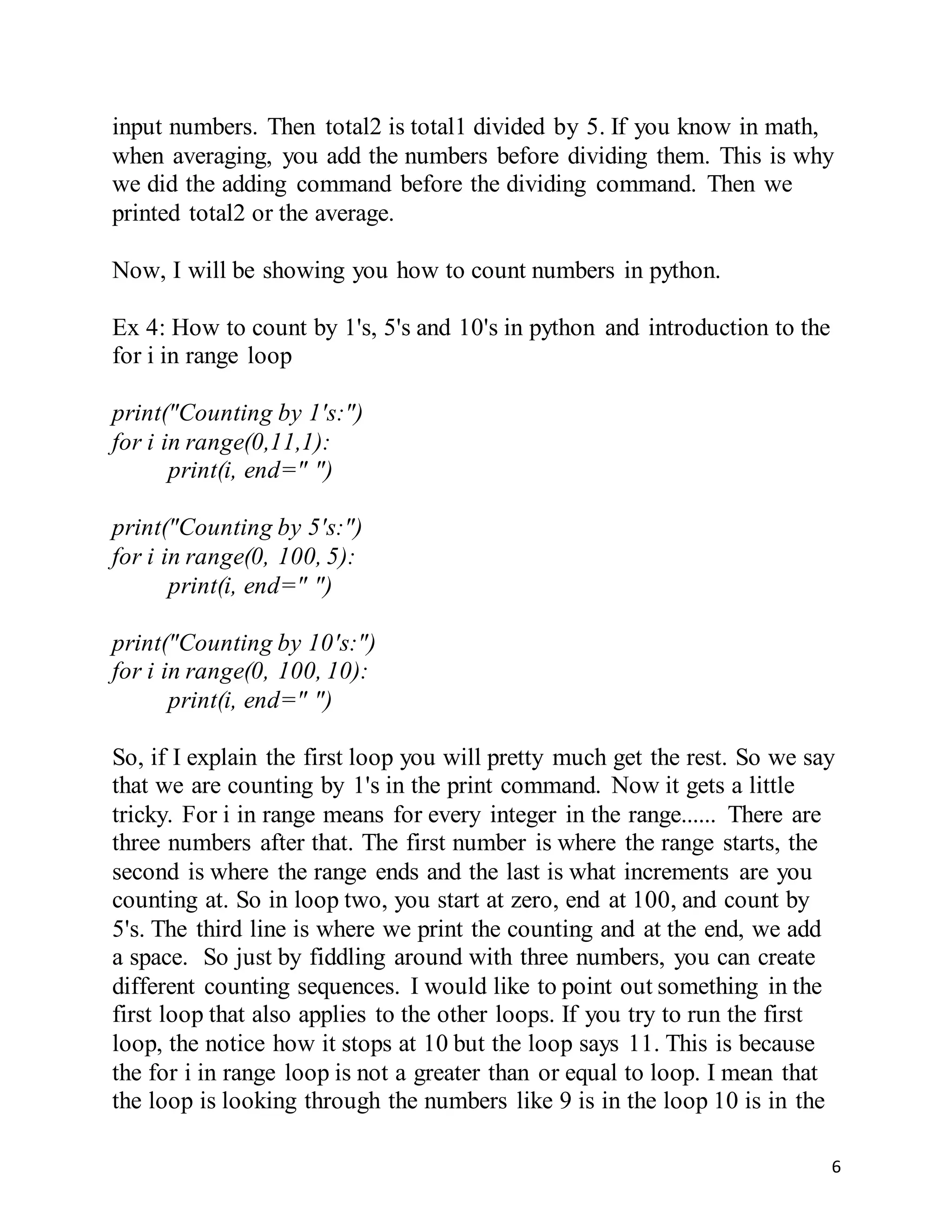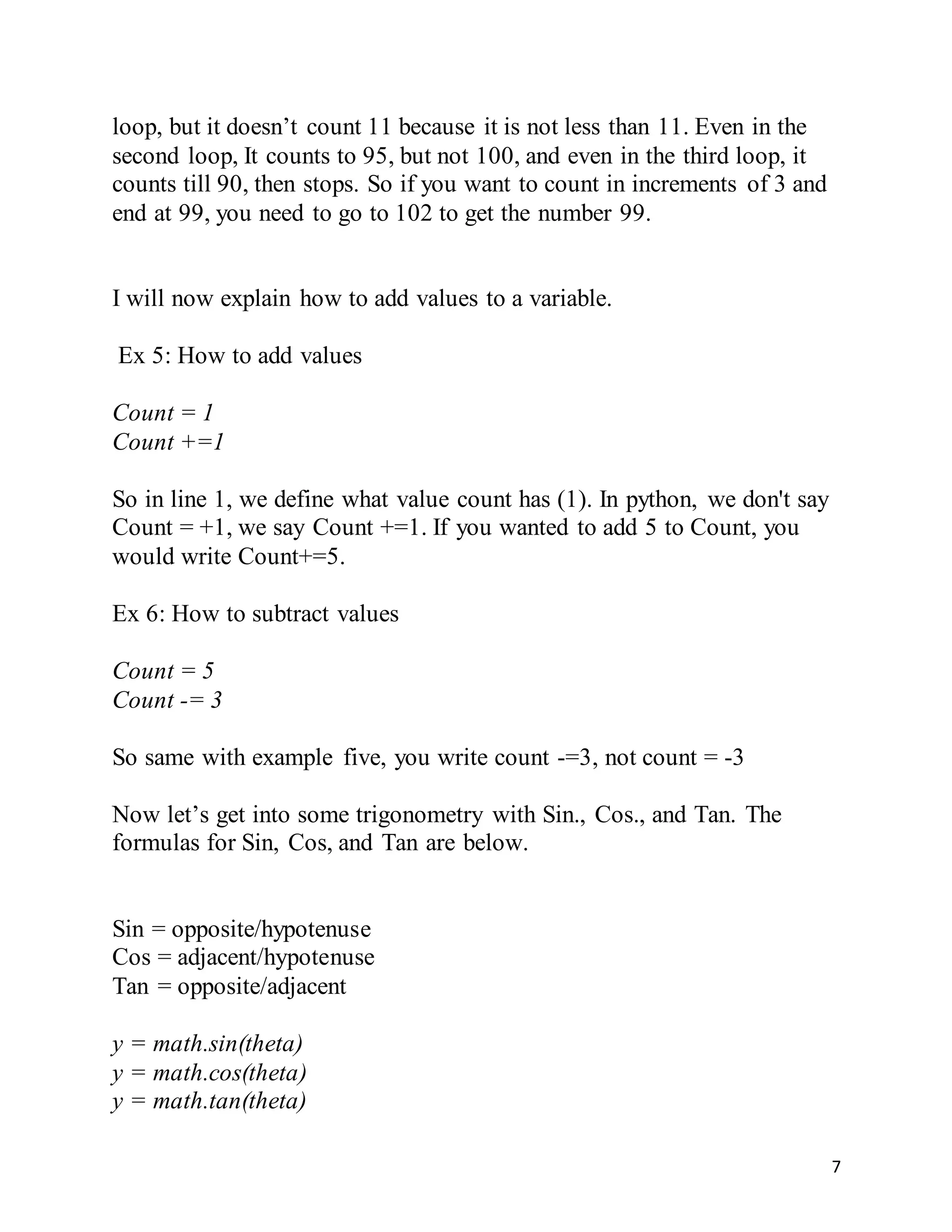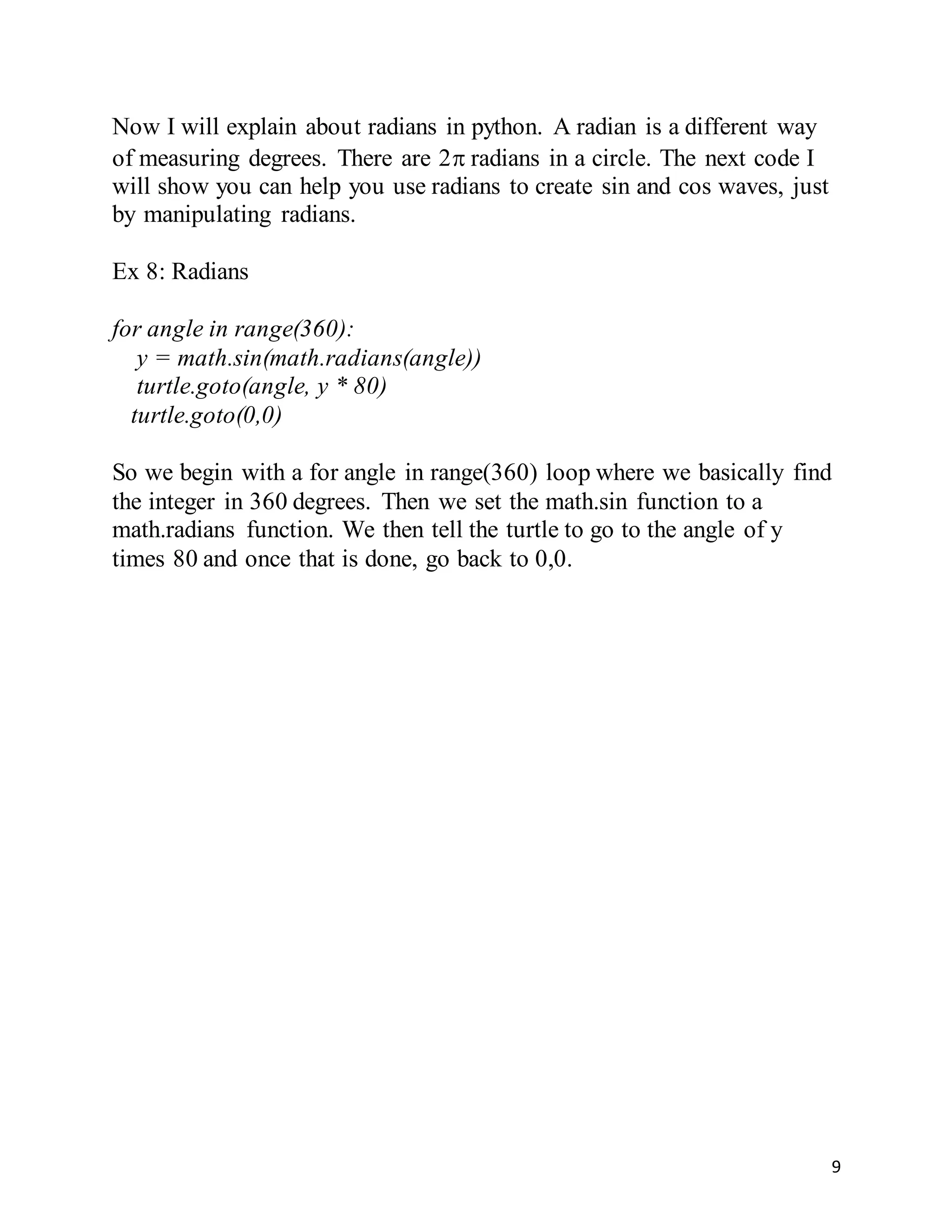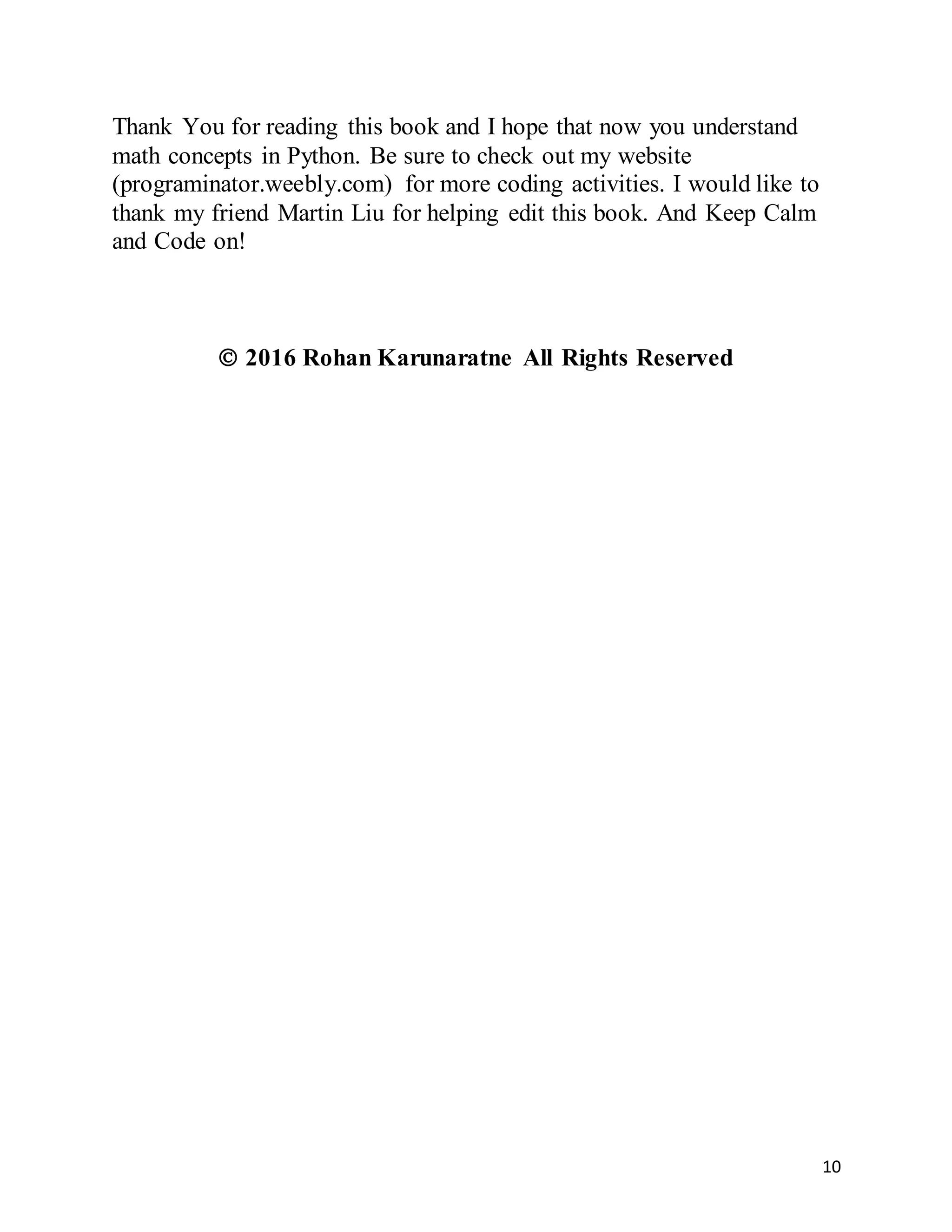This document serves as a tutorial for mastering basic mathematical concepts in Python, covering libraries such as numpy and programming fundamentals including print commands, conditionals, loops, and arithmetic operations. It provides practical examples and code snippets for adding numbers, comparing values, computing averages, and using trigonometric functions. The content aims to guide beginners while also offering insights for experienced programmers to enhance their understanding of mathematical functions in Python.
